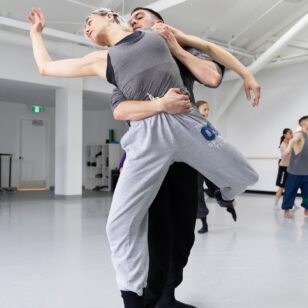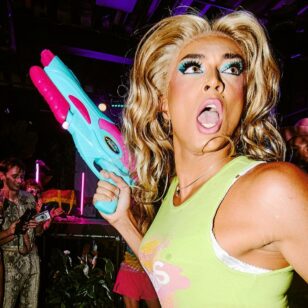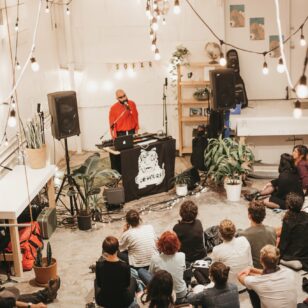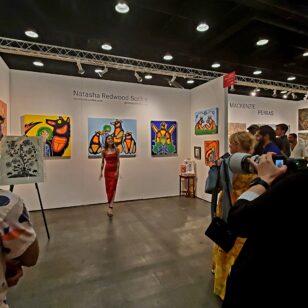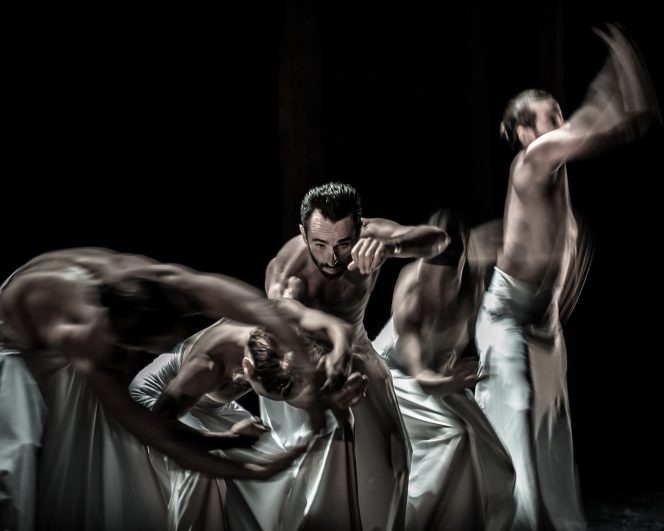
Photo by Frank Szafinski
This fall’s arts and culture line-up in the city features incredible local and international talent.
This weekend, France’s Company Wang Ramirez is launching their Canadian premiere in a dance production that is sure to dazzle with its technical prowess, its artistic beauty, as well as its gravity-defying brilliance.
This Friday and Saturday (October 26-27, 2018) at The Vancouver Playhouse (600 Hamilton Street), DanceHouse opens their 2018/2019 season with Borderline, an intensely themed and choreographed work performed by Company Wang Ramirez.
The Company was founded in 2007 by Honji Wang, a German-Korean, and Sébastien Ramirez, a French-Hispanic, who, together, choreograph works that tour world-wide and feature an exciting confluence of movement styles, such as martial arts, hip hop dance, contemporary dance, and aerial artistry.
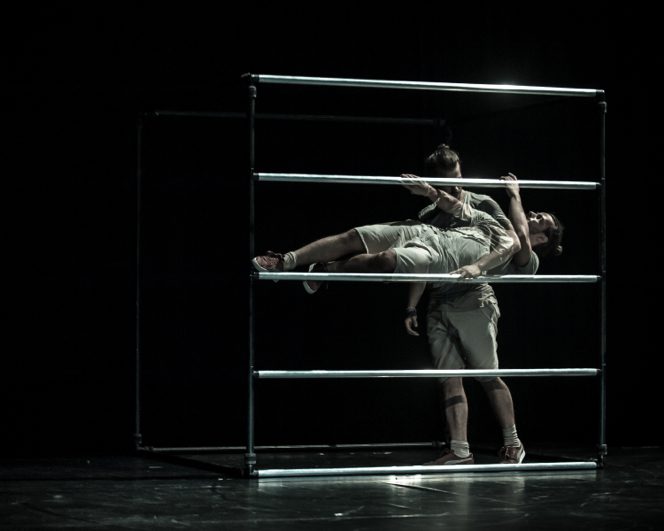
Photo by Frank Szafinski
This performance will see the two choreographers on stage with their company (Louis Becker, Johanna Faye, and Saïdo Lehlouh) in a work that is set to the spoken word and electronic and percussive rhythms of Jean-Philippe Barrios (aka LACRYMOBOY). Voiceovers will include a variety of perspectives, including a teacher in Paris and Ramirez’ father.
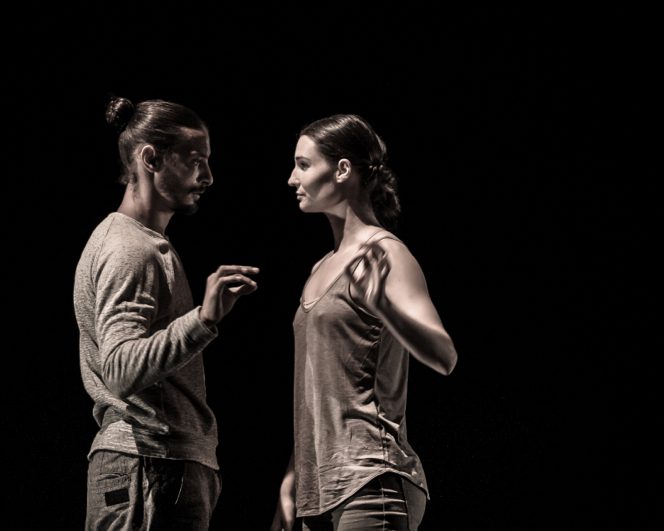
Photo by Frank Szafinski
The themes for Borderline are incredibly relevant at this time, focusing on concerns related to migration/immigration, democracy, the agency of individuals in society, and the potential both to leverage and abuse democracy. The dancers’ own personal and family experiences with displacement and the aftermath of arrival will be integrated into their performances.
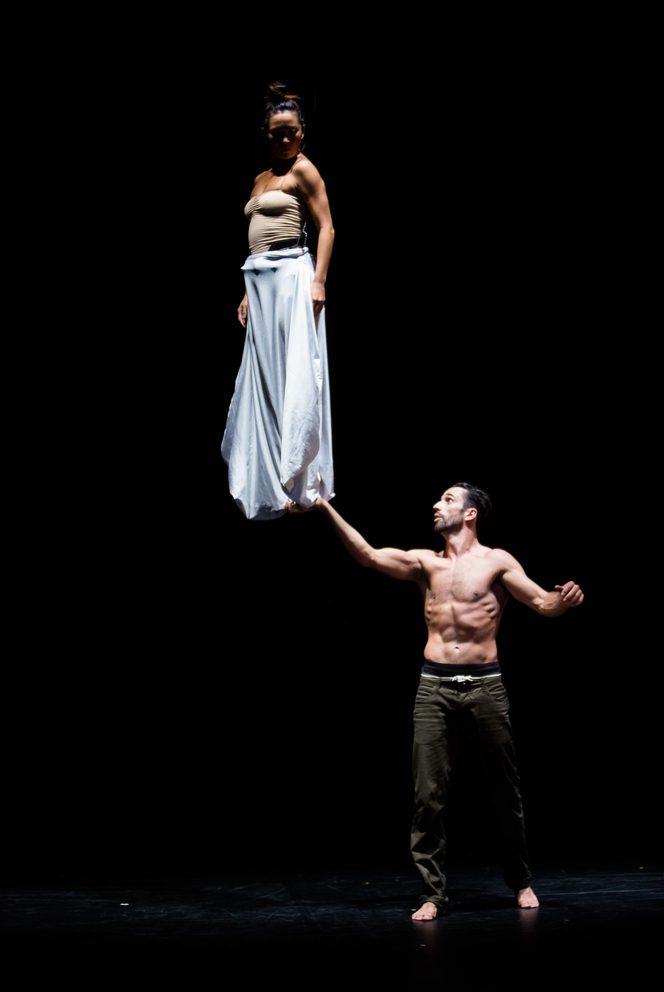
Photo by Agathe Poupeney
The show consists of 11 vignettes, with dancers being pulled and dropped by a rigger (Alister Mazzotti) who controls cables that hold the vulnerable/empowered dancers in space and time. At times, the rigger and dancers will move in unison; at other times, like upended democracy itself, sometimes the dancers will be forced to succumb to the capricious whims of an outside force.
There is a pre-show artist talk at 7:15pm. Tickets start at $35. Further info and tickets are available on-line.
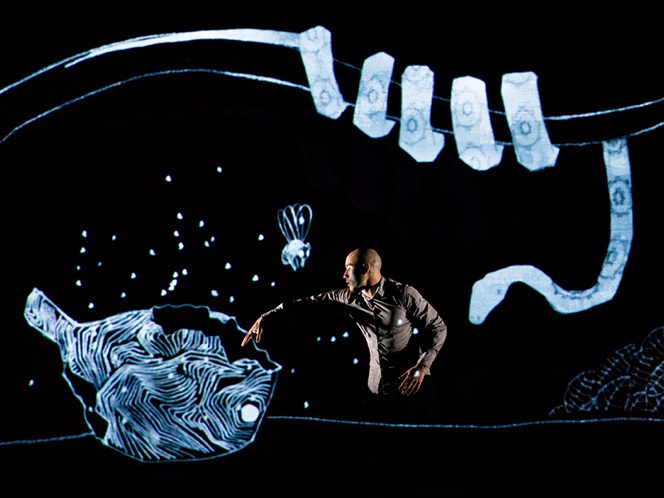
Dancer Dennis Alamanos in Chotto Desh. Photo by Richard Haughton
Also upcoming is DanceHouse’s offering of Chotto Desh, Akram Khan Company’s award-winning solo. Presented with Théâtre la Seizième and SFU Woodward’s Cultural Programs, the piece takes place November 21-24, 2018 at 8pm at SFU Goldcorp Centre for the Arts (149 West Hastings St). There will be a French performance on November 22, 2018 at 8pm and an ASL Interpretation on November 24, 2018 at 2pm.
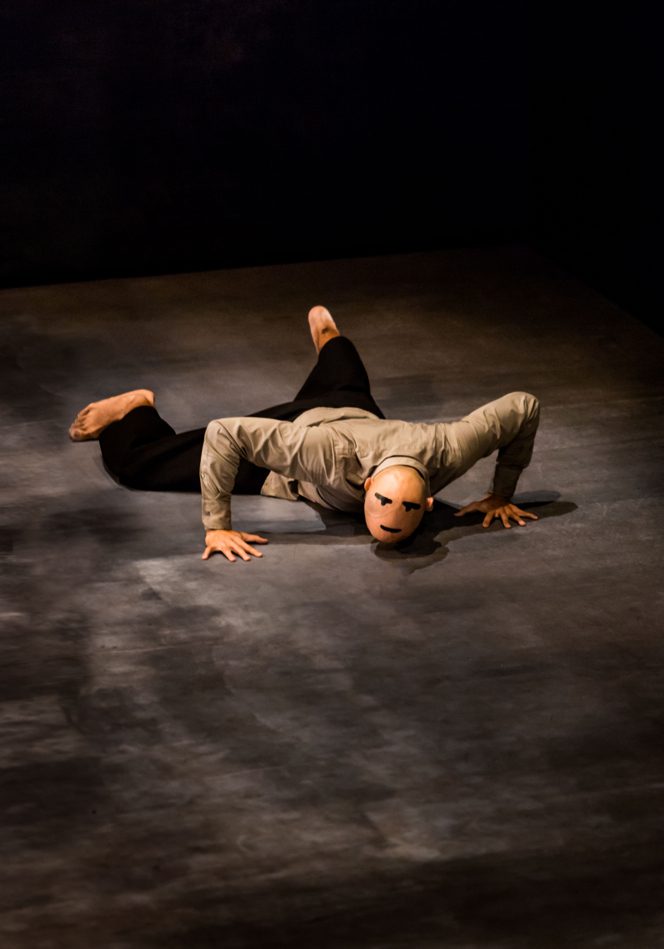
Dancer Dennis Alamanos in Chotto Desh. Photo byRichard Haughton
Chotto Desh, based on Khan’s childhood and his complicated relationship with his father, and spanning Britain and Bangladesh, emerges from a collaboration between Khan and Director Sue Buckmaster that expands upon Khan’s autobiographical solo DESH. It combines animation, storytelling, mime, and kathak (Indian classic dance form) in order to present to both adults and children (7 and up) a narrative of nostalgia, memory, cultural confusion/meshings, and the complications of home-making within multicultural Britain. The title of the work means “small homeland” in Bengali, with dancers Dennis Alamanos and Nicolas Ricchini (performing on alternate night) finding their home through the movement and narrative of the piece.
Further info and tickets can be found on-line.
Review of Borderline
In their season opener, DanceHouse evidenced their commitment to bringing global and innovative dance talent to Vancouver stages. Borderline received a standing ovation from the audience–and for good reason. What was performed was deeply thoughtful, intricately choreographed, and a wondrous joy to witness.
The themes of displacement, immigration, and the crises in freedom and democracy were very apparent threads running through the various vignettes. The dancers on stage were emotive in their movements in terms of their exploration of their own personal agencies, but also in their intertwined explorations of relationships and connectivity. Most especially, the male duets were beautiful and intense plays with strength, vulnerability, and different forms of contact.
A strength of the performance was the use of props, as well as cables to allow for height and a variety of restrained and breathtaking physical manipulations on stage. The stage was bare, save for barred cube-like structures that dancers climbed, passed through, and balanced on throughout the course of the performance. At some points, the bars created a sense of a prison; at other points, dancers were able to transgress them or find ways to slip through their restrictions.
Most impressive was the role of the darkly garbed rigger and the cables attached to dancers at various points. The rigger’s timing and pulls and releases were impeccable, sometimes without the dancer’s liberty but, at other times, adding more sweep and speed to their shifts across stage. This made the rigger both a highly visible yet invisible presence on stage. Various costumes, especially an ethereal use of gauzy white at the end, also added to the visual appeal of the dancing.
What made the performance particularly creative was the layering and mixing of media and genres. Voiceovers (often in French, translated in the distributed program) added a layer of testimony to the physical movements, while the electronic beats regulated and heightened the intensity of the dancing. The mixing of hip hop with martial arts and contemporary dance created a compelling contact zone of styles. Props especially go to dancers Louis Becker and Saido Lehlouh for their energetically impressive b-boy moves. Shifts in tone, from melancholy to zany humour, also made for a multifaceted performance. Overall, this was a fabulous launch to the 2018/19 DanceHouse season.











